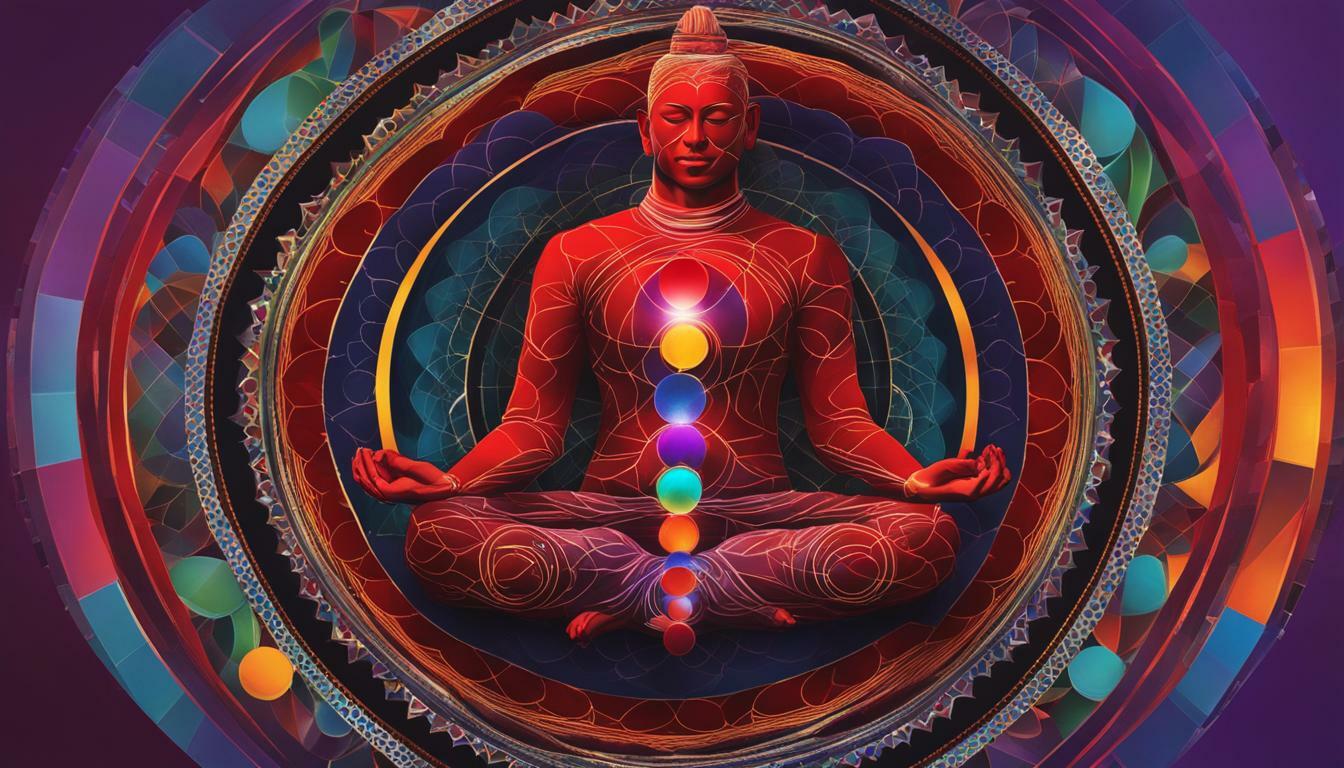Welcome to our comprehensive guide on understanding the link between your chakras and mental health. Discover which chakra affects your mental well-being and how chakra healing can support your overall mental wellness.
Factual data: Uncovering Which Chakra Affects Mental Health – A Guide is a comprehensive approach to understanding the interrelationships between the seven chakras and mental health. The chakras, psychic centers or energy centers, impact mental health in various ways.
The Base Chakra influences instincts and overall well-being, the Sacral Chakra affects femininity and sensitivities, the Solar Plexus Chakra impacts masculinity and characteristics, the Heart Chakra processes energy into feelings, the Throat Chakra transforms emotions into expressions, the Third Eye Chakra develops knowing, and the Crown Chakra integrates all chakras for a sense of purpose.
Imbalances in these chakras can lead to mental health problems, but they can be treated metaphysically using essential oils and crystals. Blocked or imbalanced chakras can cause physical and emotional discomfort, and identifying these imbalances is the first step towards healing and balance.
Techniques such as meditation, visualization, yoga, crystal healing, and aromatherapy can be utilized to balance the chakras and maintain optimal energy flow. Incorporating chakra work into daily routines and practicing mindfulness and self-care can also support mental health.
Key Takeaways:
- Understanding the connection between chakras and mental health is essential for overall well-being.
- Each chakra has a specific influence on mental health, from instincts and femininity to knowing and purpose.
- Imbalances in the chakras can lead to mental health problems, but they can be treated through metaphysical techniques such as meditation and crystal healing.
- Practicing mindfulness and self-care can support mental health by incorporating chakra work into daily routines.
- Maintaining optimal energy flow through balanced chakras is crucial for mental wellness.
The Base Chakra: Influencing Instincts and Well-being
The Base Chakra, also known as the Root Chakra, is the foundation of our energy system and plays a key role in influencing our instincts and overall sense of well-being. Located at the base of the spine, it connects us to the physical world and provides stability, security, and a sense of groundedness.
Imbalances in the Base Chakra can lead to feelings of fear, anxiety, and restlessness. When this chakra is blocked or underactive, it can manifest as a lack of motivation, difficulty in making decisions, or feeling disconnected from reality. On the other hand, an overactive Base Chakra may result in aggression, impulsive behavior, or an excessive need for control.
To bring balance to the Base Chakra, various metaphysical techniques can be employed. Essential oils such as patchouli and cedarwood can be used in aromatherapy to promote grounding and stability. Crystals such as hematite and black tourmaline can be placed on or near the chakra to absorb negative energy and enhance a sense of security.
| Base Chakra | Corresponding color | Keywords |
|---|---|---|
| Location | Base of the spine | Instincts, well-being, stability |
| Imbalances | Fear, anxiety, restlessness | Lack of motivation, indecisiveness, disconnection |
| Healing Techniques | Aromatherapy: patchouli, cedarwood | Crystals: hematite, black tourmaline |
By addressing imbalances in the Base Chakra, we can enhance our instincts, promote emotional stability, and cultivate a stronger foundation for our mental well-being. Taking the time to explore and nurture this essential energy center can have a profound impact on our overall sense of self and inner balance.

Remember, each chakra plays a unique role in our mental health, and understanding their influence is crucial to achieving optimal well-being. In the next section, we’ll explore the Sacral Chakra and its impact on femininity and sensitivities.
The Sacral Chakra: Impacting Femininity and Sensitivities
The Sacral Chakra, located in the lower abdomen, is closely tied to our emotions, creativity, and sexuality, making it an essential chakra for mental well-being, particularly in terms of femininity and sensitivities. When this chakra is balanced, the individual experiences a healthy flow of energy, allowing for emotional stability, creativity, and harmonious relationships. However, an imbalance in the Sacral Chakra can lead to emotional instability, blockages in creativity, and difficulty in expressing and embracing one’s femininity.
Imbalances in the Sacral Chakra can manifest through various mental health challenges, including mood swings, low self-esteem, emotional reactivity, and difficulty in establishing and maintaining boundaries. These imbalances can also impact one’s relationship with their own femininity, affecting their self-expression and ability to connect with their emotions.
Healing and balancing the Sacral Chakra is crucial for mental well-being. There are several techniques that can be employed to restore balance, such as meditation, yoga, and energy healing practices. Additionally, incorporating essential oils and crystals associated with the Sacral Chakra, such as orange oil and carnelian, can facilitate healing and support the chakra’s equilibrium.
By nurturing the Sacral Chakra, individuals can enhance their emotional intelligence, tap into their creative potential, and embrace their femininity with grace and confidence. When the Sacral Chakra is in harmony, it not only contributes to mental well-being but also allows for a deeper connection to oneself and others.

| Signs of a Balanced Sacral Chakra | Signs of an Imbalanced Sacral Chakra |
|---|---|
|
|
“Balancing the Sacral Chakra is essential for embracing your femininity, connecting with your emotions, and nurturing your creative spirit. Take the time to explore practices that resonate with you and allow yourself to embrace the beautiful energy of the Sacral Chakra.” – Wellness Expert
The Solar Plexus Chakra: Balancing Masculinity and Characteristics
The Solar Plexus Chakra, positioned in the upper abdomen, is associated with our personal power, confidence, and sense of self, making it crucial for mental well-being, particularly in terms of balancing masculinity and characteristics. This chakra governs our ability to assert ourselves, set healthy boundaries, and take charge of our lives. When it is in balance, we feel strong, motivated, and capable of tackling challenges head-on.
Imbalances in the Solar Plexus Chakra can manifest in different ways. An overactive chakra may lead to an excessive need for control and dominance, while an underactive chakra can result in low self-esteem, lack of motivation, and difficulty asserting oneself. These imbalances can affect both men and women, as the Solar Plexus Chakra is not limited to gender-specific qualities.
To restore balance to the Solar Plexus Chakra and promote mental well-being, there are various metaphysical techniques that can be utilized. Incorporating yellow crystals, such as citrine or yellow calcite, into your meditation practice or wearing them as jewelry can help activate and rebalance the chakra. Aromatherapy with essential oils like bergamot, lemon, or ginger can also be effective in stimulating the Solar Plexus Chakra.
| Techniques for Balancing the Solar Plexus Chakra: |
|---|
| 1. Practice self-affirmations to boost self-confidence and reinforce positive qualities. |
| 2. Engage in physical activities that require personal power, such as martial arts or weightlifting. |
| 3. Surround yourself with the color yellow in your environment or wear clothing in this color. |
| 4. Maintain a healthy diet and focus on foods that support digestive health. |
By incorporating these practices into your daily routine, you can create a harmonious balance within the Solar Plexus Chakra, fostering a sense of empowerment, self-worth, and mental well-being.
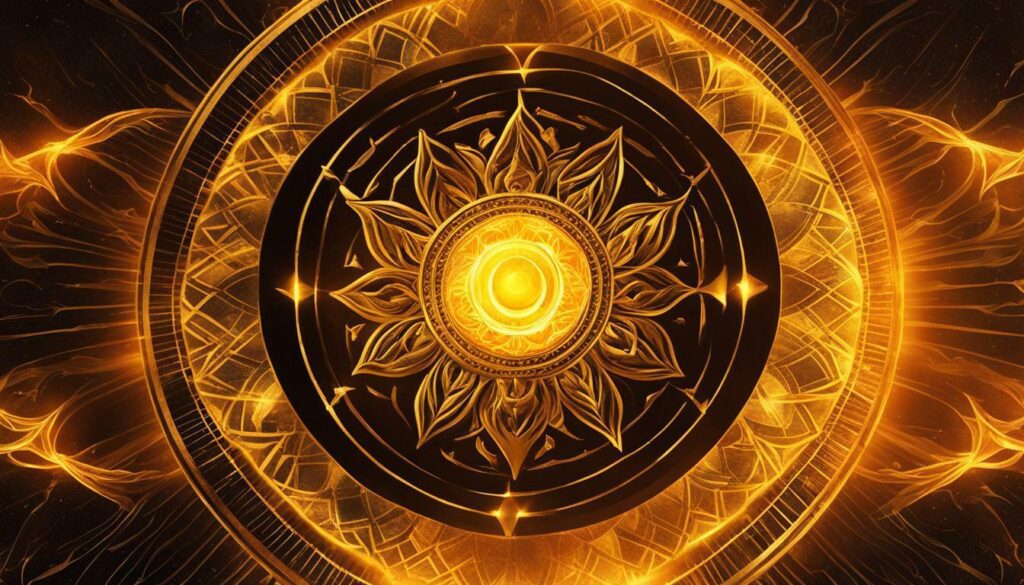
The Heart Chakra: Processing Energy into Feelings
The Heart Chakra, located at the center of the chest, is the bridge between the lower and upper chakras, responsible for processing and integrating energy into feelings, which plays a vital role in maintaining mental well-being. This chakra, also known as Anahata, governs our ability to give and receive love, compassion, and empathy. When the Heart Chakra is balanced, we experience harmony, joy, and emotional well-being.
In terms of energy, the Heart Chakra is associated with the element of air, symbolizing lightness, freedom, and expansion. It is linked to the sense of touch, as it connects us to the physical sensations of love and compassion. This chakra resonates with the color green, representing growth and healing, as well as pink, symbolizing pure love and emotional warmth.
When the Heart Chakra is blocked or imbalanced, it can manifest as emotional numbness, difficulty in forming meaningful relationships, and a lack of self-love. Physical symptoms may include respiratory issues, heart problems, and immune system disorders. To restore balance to the Heart Chakra, it is important to engage in practices that promote love, forgiveness, and compassion, both towards ourselves and others.
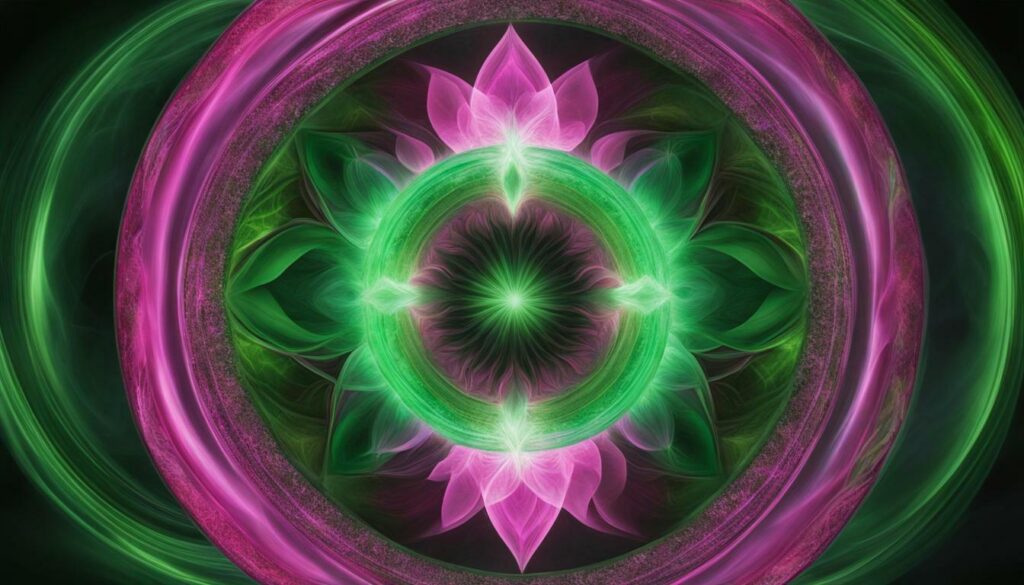
There are various techniques that can be utilized to support the healing and balance of the Heart Chakra. Meditation, for example, allows us to connect with our inner selves and cultivate feelings of love and gratitude. Crystals like rose quartz and green aventurine can be used to enhance the energy of the Heart Chakra and promote emotional healing. Aromatherapy with essential oils such as rose, lavender, and bergamot can also be beneficial in restoring balance to this chakra.
In conclusion, nurturing the Heart Chakra is crucial for maintaining optimal mental well-being. By cultivating love, compassion, and forgiveness, we can foster emotional healing and experience a deeper connection with ourselves and others. Remember to incorporate practices like meditation, crystal healing, and aromatherapy into your daily routine to support the balance of the Heart Chakra and promote overall mental wellness.
The Throat Chakra: Expressing Emotions
The Throat Chakra, positioned in the throat region, enables us to express our emotions and communicate our truth, making it essential for maintaining good mental health and emotional well-being. This chakra governs our ability to convey our thoughts, ideas, and feelings effectively, both verbally and non-verbally. When the Throat Chakra is balanced, we can express ourselves authentically, assert our boundaries, and establish healthy communication in our relationships.
Imbalances in the Throat Chakra can manifest as difficulties in self-expression, such as fear of speaking up, a tendency to hold back words, or an inability to communicate openly. These imbalances may result in feelings of frustration, resentment, or isolation. It is important to address these imbalances to foster clear and compassionate communication with ourselves and others.
To balance and heal the Throat Chakra, various techniques can be employed. Meditation and visualization practices can help align the energy in this chakra, allowing for the free flow of expression. Additionally, using crystals such as blue lace agate, aquamarine, or lapis lazuli can support the Throat Chakra’s healing process. Essential oils like peppermint or eucalyptus can be diffused or applied to the throat area to stimulate and harmonize this energy center.

| Signs of Throat Chakra Imbalance | Ways to Balance the Throat Chakra |
|---|---|
|
|
Remember, the Throat Chakra empowers you to speak your truth and express yourself authentically. By embracing and nurturing this energy center, you can enhance your ability to communicate effectively, foster healthy relationships, and support your overall mental well-being.
The Third Eye Chakra: Developing Knowing
The Third Eye Chakra, located in the center of the forehead, is associated with insights, intuition, and inner knowing, making it a crucial chakra for mental well-being and clarity of thought. This chakra, also known as the Ajna Chakra, is believed to be the portal to higher consciousness and spiritual awareness.
When the Third Eye Chakra is balanced and harmonious, it allows us to see beyond the physical realm and tap into our inner wisdom. It enables us to trust our intuition, make informed decisions, and perceive the world with greater clarity. A well-functioning Third Eye Chakra can help us develop a deep sense of knowing, allowing us to navigate life’s challenges with confidence and purpose.
To balance and activate the Third Eye Chakra, various techniques can be employed. Meditation and visualization exercises focused on the area between the eyebrows can help clear blockages and stimulate the flow of energy. Yoga poses such as child’s pose, downward-facing dog, and the seated forward bend can also help awaken and align this chakra.
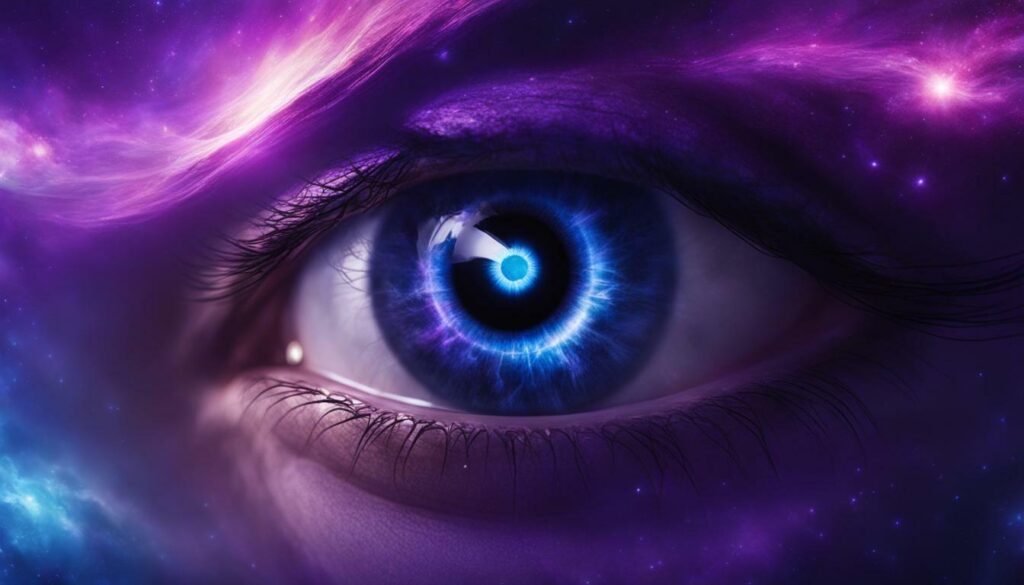
Aromatherapy using essential oils like frankincense, sandalwood, or lavender can be effective in opening and balancing the Third Eye Chakra. Crystal healing is another popular method, with stones such as amethyst, lapis lazuli, and clear quartz known for their connections to intuition and spiritual insight.
By nurturing and balancing the Third Eye Chakra, individuals can develop heightened intuition, expand their consciousness, and gain a deeper understanding of their purpose and path in life. Cultivating the Third Eye Chakra can enhance mental well-being and bring greater clarity and insight into one’s thoughts and actions.
| Techniques for Balancing the Third Eye Chakra | Benefits |
|---|---|
| Meditation and visualization exercises | Clearing blockages and stimulating energy flow |
| Yoga poses | Awakening and alignment |
| Aromatherapy with essential oils | Opening and balancing |
| Crystal healing | Enhancing intuition and insight |
The Crown Chakra: Integrating for a Sense of Purpose
The Crown Chakra, situated at the top of the head, serves as the gateway to higher consciousness, integrating all the chakras and providing a sense of purpose and spiritual connection, which contributes to mental well-being. This powerful chakra is associated with the color violet and connects us to our higher selves and the divine.
When the Crown Chakra is balanced and open, individuals experience a deep sense of inner peace, clarity, and connection to something greater than themselves. On the other hand, imbalances in this chakra can lead to feelings of disconnection, lack of purpose, and spiritual emptiness.
To balance and harmonize the Crown Chakra, various metaphysical techniques can be employed. Meditation is especially effective in quieting the mind and allowing the energy of the Crown Chakra to flow freely. Visualize a brilliant violet light at the crown of your head, expanding and filling your entire being with a sense of purpose and divine connection.
Additionally, crystals like amethyst and clear quartz can be used to stimulate and balance the Crown Chakra. Simply place these crystals on your crown or hold them in your hand while meditating. Their energy will work to clear any blockages and promote spiritual awareness and alignment.
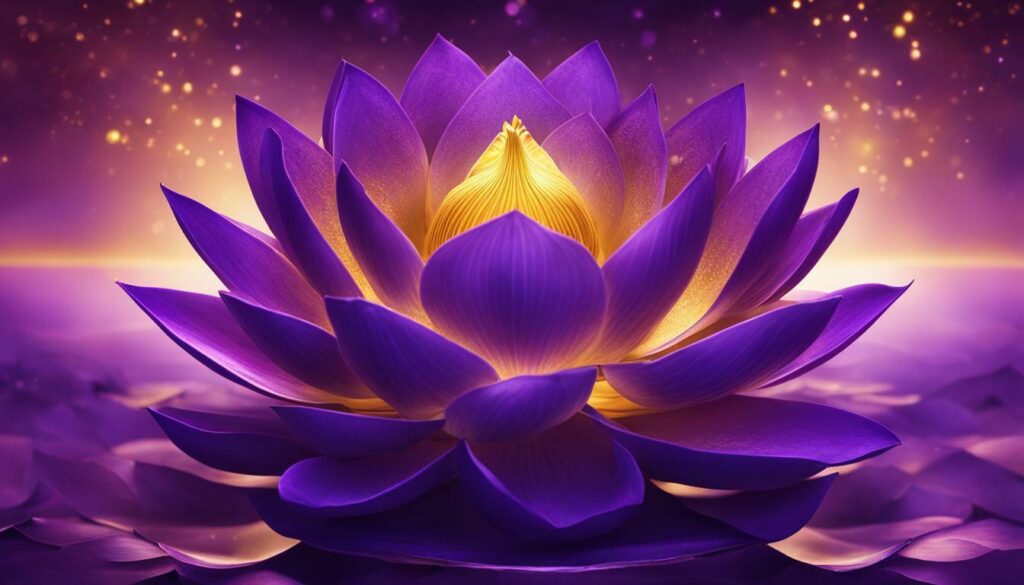
Table: Balancing the Crown Chakra
| Techniques | Benefits |
|---|---|
| Meditation | Allows the energy of the Crown Chakra to flow freely, promoting a sense of purpose and spiritual connection. |
| Crystals (Amethyst, Clear Quartz) | Stimulate and balance the Crown Chakra, enhancing spiritual awareness and alignment. |
| Aromatherapy (Lavender, Frankincense) | Calms and soothes the mind, supporting the integration and balance of the Crown Chakra. |
By nurturing and balancing the Crown Chakra, you can tap into your highest potential and experience a profound sense of purpose and fulfillment. Remember to practice mindfulness and self-care regularly, incorporating these techniques into your daily routine to support your mental well-being.
Balancing Chakras for Mental Wellness
Imbalances in our chakras can lead to mental health issues, but with the use of metaphysical techniques, such as essential oils, crystals, and chakra meditation, we can restore balance and support our mental well-being. Each chakra corresponds to a different area of our physical, emotional, and spiritual selves, and by addressing any imbalances, we can promote overall mental wellness.
One effective method for balancing chakras is through the use of essential oils. Different oils have specific properties that can help harmonize and cleanse each chakra. For example, lavender essential oil is commonly used to balance the Crown Chakra, while ylang-ylang essential oil is known to support the Sacral Chakra. By incorporating these oils into your daily routine, such as by diffusing them or using them during meditation, you can promote the flow of energy and restore balance within your chakras.
Crystals are another powerful tool for chakra healing. Each crystal has unique properties that align with specific chakras and can help to remove blockages and restore energy flow. Amethyst, for instance, is often associated with the Third Eye Chakra and can aid in enhancing intuition and inner knowing. By wearing or placing crystals on the corresponding chakra points, you can facilitate the healing process and support your mental well-being.
Chakra meditation is a practice that involves focusing on each chakra individually to promote balance and harmony. During meditation, you can visualize each chakra as a spinning wheel of vibrant energy, allowing any stagnant or blocked energy to be released. By incorporating chakra meditation into your daily routine, you can cultivate a deeper connection to yourself and promote mental clarity and emotional stability.
| Chakra | Essential Oil | Crystal |
|---|---|---|
| Base Chakra | Patchouli | Red Jasper |
| Sacral Chakra | Ylang-Ylang | Carnelian |
| Solar Plexus Chakra | Lemon | Citrine |
| Heart Chakra | Rose | Rhodonite |
| Throat Chakra | Peppermint | Blue Lace Agate |
| Third Eye Chakra | Lavender | Amethyst |
| Crown Chakra | Frankincense | Clear Quartz |
Remember, balancing your chakras is an ongoing process. It requires self-awareness, intention, and consistent practice. By incorporating these metaphysical techniques into your life and being attuned to the needs of your chakras, you can support your mental well-being and cultivate a sense of harmony and balance within.
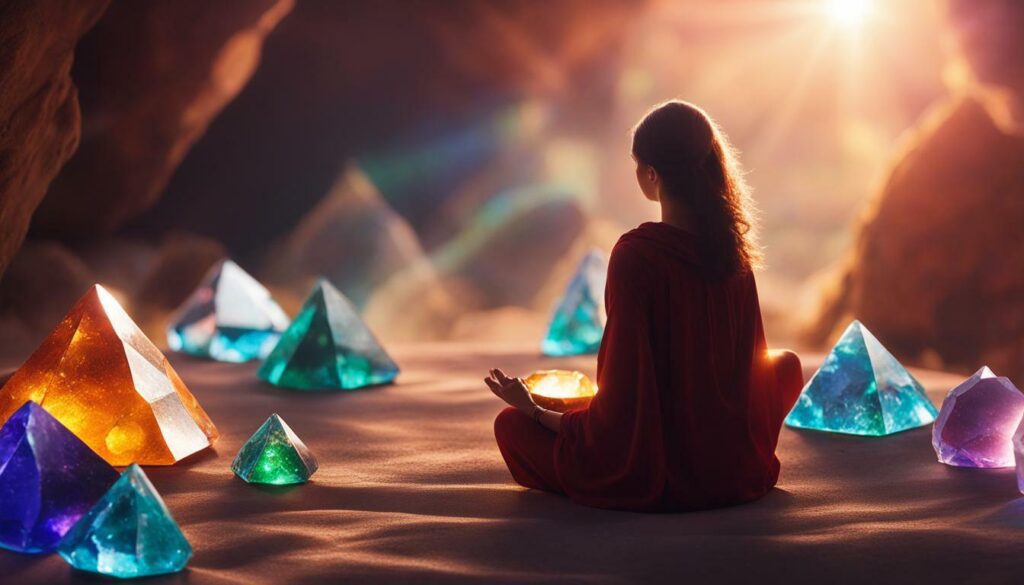
Practicing Mindfulness and Self-Care for Mental Health
To nurture our mental health, it’s essential to incorporate mindfulness and self-care practices into our daily routines, including chakra therapy and an understanding of how chakras impact our mental well-being. Chakras, the psychic centers or energy centers in our bodies, play a vital role in maintaining optimal mental wellness. Imbalances in these energy centers can lead to various mental health problems, such as anxiety, depression, and emotional instability.
One powerful technique for balancing the chakras and promoting mental well-being is through chakra therapy. By utilizing essential oils and crystals associated with each chakra, we can facilitate healing and restore balance to our energy centers. Essential oils like lavender, frankincense, and peppermint can be used during meditation or applied topically to stimulate and harmonize the chakras. Similarly, crystals like amethyst, citrine, and rose quartz can be placed on the corresponding chakra points to promote energy flow and release blockages.
Incorporating mindfulness practices into our daily routines is another effective way to support our mental health. Mindfulness involves being fully present in the moment, observing our thoughts and emotions without judgment. By practicing mindfulness meditation, we can cultivate a greater sense of self-awareness and learn to manage our mental and emotional states. Daily mindfulness exercises, such as deep breathing, body scans, and gratitude practices, can help us stay centered and connected to our inner selves.
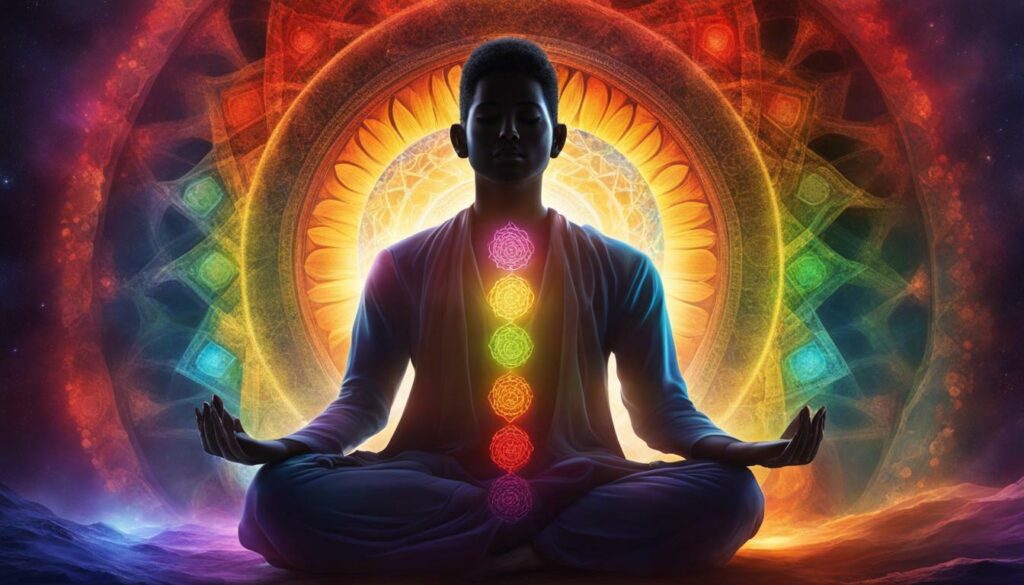
| Chakra | Associated Essential Oils | Associated Crystals |
|---|---|---|
| Base Chakra | Patchouli, Cedarwood, Vetiver | Black Tourmaline, Red Jasper, Garnet |
| Sacral Chakra | Ylang-Ylang, Orange, Sandalwood | Carnelian, Moonstone, Sunstone |
| Solar Plexus Chakra | Peppermint, Lemon, Ginger | Citrine, Amber, Tiger’s Eye |
| Heart Chakra | Rose, Bergamot, Jasmine | Green Aventurine, Rose Quartz, Rhodonite |
“Balancing the chakras and practicing mindfulness can significantly support mental wellness. It’s important to remember that everyone’s journey is unique, and finding the techniques that resonate with you is key. With commitment and a holistic approach, we can cultivate balance, harmony, and resilience in our mental and emotional well-being.”
By dedicating time and energy to chakra therapy and mindfulness practices, we can enhance our mental well-being and create a solid foundation for overall health. Remember to listen to your body and intuition, as they will guide you towards the practices that will best serve you on your journey towards lasting mental wellness.
Conclusion
By understanding which chakra affects mental health and employing chakra healing techniques along with mindfulness and self-care practices, we can take proactive steps towards nurturing our mental well-being and achieving a sense of balance and harmony.
The seven chakras, known as psychic centers or energy centers, play a significant role in influencing our mental health. The Base Chakra impacts our instincts and overall well-being, while the Sacral Chakra affects our femininity and sensitivities. The Solar Plexus Chakra influences masculinity and characteristics, while the Heart Chakra processes energy into feelings. The Throat Chakra transforms emotions into expressions, and the Third Eye Chakra develops our inner knowing. Finally, the Crown Chakra integrates all the chakras to provide a sense of purpose and connection to something greater.
Imbalances in these chakras can lead to mental health problems, causing physical and emotional discomfort. However, these imbalances can be treated metaphysically using techniques such as essential oils and crystals. Meditation, visualization, yoga, crystal healing, and aromatherapy are powerful tools that can be utilized to balance the chakras and maintain optimal energy flow.
It is crucial to incorporate chakra work into our daily routines and practice mindfulness and self-care to support our mental health. By doing so, we can create a nurturing environment for our chakras and promote a harmonious flow of energy throughout our body and mind. Taking the time to address our chakra imbalances and nurture our mental well-being will empower us to live a more balanced and fulfilling life.
FAQ
Q: What are chakras?
A: Chakras are psychic centers or energy centers in the body that impact mental health and overall well-being.
Q: How many chakras are there?
A: There are seven main chakras in the body, each with its own unique functions and influences on mental health.
Q: How do chakras affect mental health?
A: Each chakra influences different aspects of mental health, such as instincts, femininity, masculinity, emotions, knowing, and a sense of purpose. Imbalances in these chakras can lead to mental health problems.
Q: How can I identify chakra imbalances?
A: Blocked or imbalanced chakras can cause physical and emotional discomfort. Identifying these imbalances involves paying attention to any physical or emotional symptoms and exploring the association with specific chakras.
Q: What techniques can help balance the chakras?
A: Techniques such as meditation, visualization, yoga, crystal healing, and aromatherapy can be utilized to balance the chakras and maintain optimal energy flow.
Q: Can essential oils and crystals help balance chakras?
A: Yes, essential oils and crystals are often used metaphysically to support chakra healing and balance. Different oils and crystals are associated with specific chakras and can be used in various ways to promote chakra alignment.
Q: How can I incorporate chakra work into my daily routine?
A: You can incorporate chakra work into your daily routine by practicing mindfulness, setting intentions, using affirmations, and engaging in activities that promote self-care and well-being.
Q: Can balancing chakras improve mental health?
A: Yes, balancing chakras can help improve mental health by promoting a sense of balance, harmony, and overall well-being.
Q: Is chakra healing a substitute for professional mental health treatment?
A: Chakra healing can be used as a complementary therapy to support mental health, but it is not a substitute for professional mental health treatment. It is important to consult with a healthcare professional for any specific mental health concerns.
Q: Are there any risks or side effects of chakra healing?
A: Chakra healing techniques are generally safe and well-tolerated. However, it is essential to use them mindfully and listen to your body’s responses. If you experience any discomfort or worsening symptoms, it is advisable to consult a professional.
